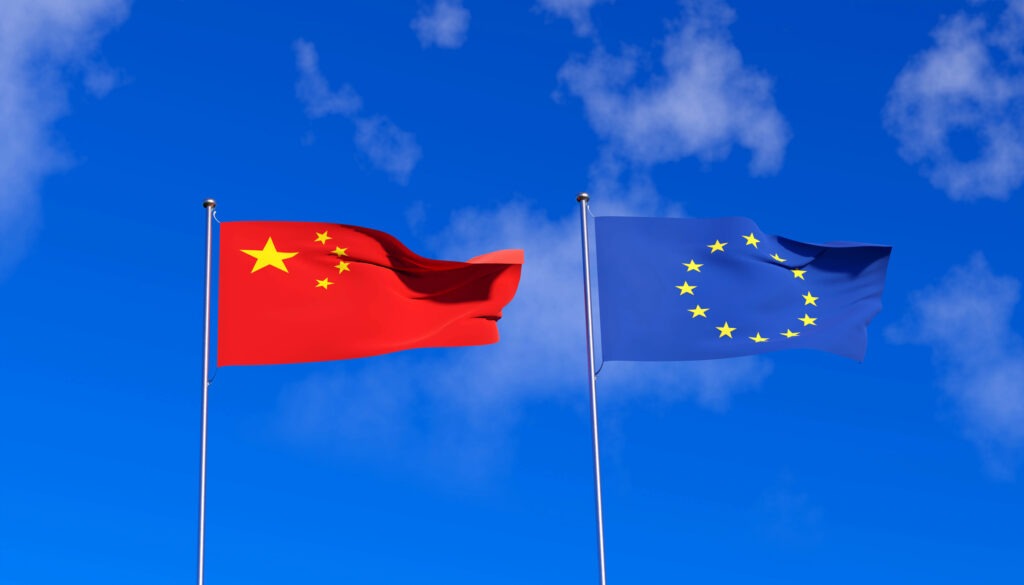EU Commission confirms provisional tariffs on BEVs made in China
05 July 2024

With provisional tariffs now imposed on imports of battery-electric vehicles (BEVs) made in China, how will this affect the European market? In the latest Autovista24 podcast, editor Tom Geggus and special content editor Phil Curry discuss the news.
BEVs made in China and imported into the EU are now subject to provisional tariffs. The European Commission confirmed the move as governmental talks continue. But which carmakers are facing steeper levies, and what is the likely impact on Europe’s automotive market?
Subscribe to the Autovista24 podcast and listen to previous episodes on Spotify on Apple, Google and Amazon Music.
Show notes
Commission implementing regulation
Key points paper: European Commission’s anti-subsidy investigation
EU governments hesitant on Chinese EV tariffs as trade spat escalates
BEVs made in China face new provisional EU tariffs on top of existing duties
China’s impact on the European Automotive Industry
How to recharge Europe’s battery-electric vehicle market
The background
Following a month of talks, the European Commission has confirmed the implementation of provisional tariffs on BEVs imported from China. It aims to level the competition with domestic carmakers when it comes to list prices.
On 4 October 2023, the Commission launched an investigation into the illegal subsidisation of BEV value chains in China. Then on 12 June 2024, the investigation’s provisional conclusion was given following talks with the Chinese government.
‘As part of its ongoing investigation, the Commission has provisionally concluded that the battery-electric vehicle value chain in China benefits from unfair subsidisation, which is causing a threat of economic injury to EU BEV producers. The investigation also examined the likely consequences and impact of measures on importers, users and consumers of BEVs in the EU,’ the Commission stated at the time.
As a result, the Commission outlined new duties it would apply to BEVs made in China and imported into the EU. These pre-disclosed rates were calculated based on the amount of subsidisation the investigation uncovered.
Tariffs in place
On 4 July 2024, the Commission confirmed the provisional tariffs it would place on each BEV imported into the EU from China. The tariff rate was lowered slightly for many companies since the June pre-disclosure. This was the result of comments from interest parties on how the pre-disclosed duties were calculated.
These confirmed provisional duties will be in addition to the current 10% levy applied to imports, and will come into effect as of 5 July 2024 for a maximum duration of four months. Within this time, the Commission has confirmed that a final decision on the definitive duties can be expected.
This will follow a vote by EU Member States. If a qualified majority of at least 15 member states, representing a minimum 65% of the EU population, vote against tariffs, they will be blocked. When adopted, this final decision would make the duties definitive for five years.
Possible outcomes
Christof Ruhland, director of business development at Autovista Group (part of J.D. Power), suggested several possible outcomes of the tariff implementation. These include:
- Chinese OEMs may delay or limit their BEV market entry strategies in Europe. This is because the new tariffs change their calculations
- There could be an increase in plug-in and full hybrid models, as these are not affected by the new tariffs
- Consumer prices for BEVs will rise as tariffs are too high to be absorbed by the profit margin. This also affects BEV models from European manufacturers that are produced in China
- Some Chinese imports may be redirected to non-EU countries like Norway and the UK, or other regions such as the Middle East or Brazil
- There will be an increasing need for Chinese OEMs to establish production sites in the EU to avoid import tariffs
- The tariffs could hinder the EU's environmental objectives by making EVs less accessible to the public, thereby slowing the transition from ICE to BEVs
- If there is no agreement on the matter, China will most likely introduce retaliatory measures, risking a wider trade war that could damage the European economy (not just the automotive sector).
Model impact
There will be an impact on several models currently available in Europe. Some cars in the January to May EV best-seller table, compiled with data from EV Volumes, will likely see tariffs imposed upon them.
The Tesla Model 3, currently the second best-selling EV in Europe, will likely be affected. However, the US manufacturer, facing a 20.8% tariff, has requested a review for an individual levy, which will be implemented at the definitive stage.
The MG4, built by SAIC, was the seventh best-selling EV across the first five months of this year and is facing the highest tariff level. Geely’s Volvo EX30 is also likely to be affected. However, production of this model starts in Europe next year, meaning it will no longer face charges when it shifts manufacturing out of China. The world’s most popular carmaker, BYD, does not feature in Europe’s EV top 20 at present.
The overall EU BEV market will surely be affected by the tariffs. The region is looking to continue its transition to zero-emission mobility, making affordability a central tenant for mass marketability. But these duties mean carmakers are faced with a decision. Either absorb the tariff costs meaning smaller margins, or pass costs on to the consumer. Should this happen the region’s transition could struggle with fewer affordable models available.



